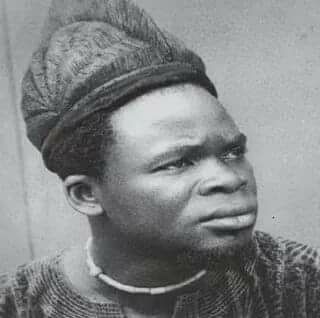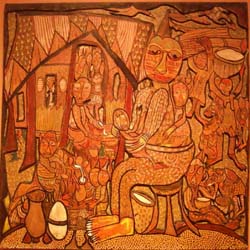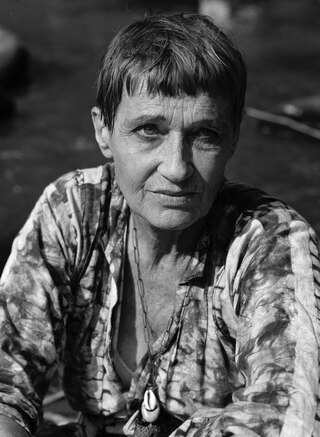
Osogbo is a town in Nigeria. It became the capital city of Osun State in 1991. Osogbo city seats the Headquarters of both Osogbo Local Government Area and Olorunda Local Government Area. It is some 88 kilometers by road northeast of Ibadan. It is also 108 kilometres (67 mi) by road south of Ilorin and 108 kilometres (67 mi) northwest of Akure. Osogbo shares boundaries with Ikirun, Ilesa, Ede, Egbedore, Ogbomosho and Iragbiji and it is easily accessible from any part of the state because of its central nature. It is about 48 km from Ife, 32 km from Ilesa, 46 km from Iwo, 48 km from Ikire and 46 km from Ila-Orangun; The city had a population of about 500,000 people and an approximate land area of 2875 km2 the postal code of the area is 230.

Osun-Osogbo is a sacred grove along the banks of the Osun river just outside the city of Osogbo, Osun State of Nigeria.

The Oṣun River is a river that flows southwards through Osun State in southwestern Nigeria into the Lagos Lagoon and the Atlantic Gulf of Guinea. It is one of the several rivers ascribed in local mythology to have been women who turned into flowing waters after some traumatic event frightened or angered them.

Durodola Durosomo Duroorike Timothy Adisa Ladipo, more commonly known as Duro Ladipo, was one of the best known and critically acclaimed Yoruba dramatists who emerged from postcolonial Africa. Writing solely in the Yoruba language, he captivated the symbolic spirit of Yoruba mythologies in his plays, which were later adapted to other media such as photography, television and cinema. His most famous play, Ọba kò so, a dramatization of the traditional Yoruba story of how Ṣango became the Orisha of Thunder, received international acclaim at the first Commonwealth Arts Festival in 1965 and on a Europe an tour, where a Berlin critic, Ulli Beier, compared Ladipọ to Karajan. Ladipo usually acted in his own plays.

Chief Nike Davies-Okundaye, also known as Nike Okundaye, Nike Twins Seven Seven and Nike Olaniyi, is a Nigerian batik and adire textile designer. She is best known as an artist for her cloth work and embroidery pieces.
Chief Horst Ulrich Beier, commonly known as Ulli Beier, was a German editor, writer and scholar who had a pioneering role in developing literature, drama and poetry in Nigeria, as well as literature, drama and poetry in Papua New Guinea.

Twins Seven Seven, born Omoba Taiwo Olaniyi Oyewale-Toyeje Oyelale Osuntoki was a Nigerian painter, sculptor and musician. He was an itinerant singer and dancer before he began his career as an artist, first attending in 1964 an Mbari Mbayo workshop conducted by Ulli Beier and Georgina Beier in Osogbo. Twins Seven Seven went on to become one of the best known artists of the Osogbo School.
Chief Jimoh Buraimoh is a Nigerian painter and artist. Chief Buraimoh is one of the most influential artists to emerge from the 1960s workshops conducted by Ulli Beier and Georgina Beier in Osogbo, Osun State, Nigeria. Since then, he has become one of the best known artists from Osogbo.
Timothy Akis, born around 1944 in Tsembaga village, Simbai Valley, Madang Province, Papua New Guinea, died in 1984, was a Papua New Guinean artist. His art consisted primarily in imaginative pen and ink drawings and batiks inspired by his country's wildlife.
Akin Fakeye, is a Nigerian artist who works in the medium of wood carving.

Healing of Abiku Children is a piece created by the Nigerian artist Twins Seven-Seven in 1973, located in the Indianapolis Museum of Art, which is in Indianapolis, Indiana, United States of America. It consists of a large wooden plaque intricately carved and dyed with pigment to depict an important Yoruba ceremony. In it, a mother consults with a priest to keep her abiku twins in this world, rather than dying and being reborn to her over and over.
Bakare Gbadamosi is a Yoruba poet, anthropologist and short story writer from Nigeria.

Susanne Wenger MFR, also known as Adunni Olorisha, was an Austrian-Nigerian artist and Yoruba priestess who expatriated to Nigeria. Her main focus was the Yoruba culture and she was successful in building an artist cooperative in Osogbo. She partnered with local artists in Osogbo to redevelop and redecorate the Osun Osogbo Sacred Grove with sculptures and carvings depicting the various activities of the Orishas.

Mbari is a visual art form practiced by the Igbo people in southeast Nigeria consisting of a sacred two- story house constructed as a propitiatory rite. Mbari houses of the Owerri-Igbo, which are large opened-sided square planned shelters contain many life-sized, painted figures. Mbari houses are made as a gift to Ala, as a way to acknowledge Ala's charitable and overarching presence. Some Mbari houses are dedicated strictly and solely to Ala. Sometimes, however, other gods are represented along with Ala in the structure. Other sculptures which could be included are of officials, craftsmen, foreigners, animals, legendary creatures and ancestors. Mbari houses take years to build and building them is regarded as sacred. Along with being representations of abundances and harmony, they are most usually created during times of peace and stability. A ceremony is performed within the structure for a gathering of town leaders. After the ritual is complete, going in or even looking at the Mbari house is considered taboo. Mbari are public shrine galleries where complex characters of Igbo mythology, folklore, and society are fleshed out in termite earth.

Iwalewahaus, University of Bayreuth, is a place for the production and presentation of contemporary art. By doing exhibitions, academic research and teaching, by taking care of the collection and the archive as well as providing residencies for artists, recent developments in contemporary African and Diaspora culture are presented and refined together with artists and institutions. The mission of Iwalewahaus is to research, document and teach recent African culture. The focus is on visual arts, everyday culture, the media and music. The house provides space for lectures, conferences, concerts, film screenings and readings and is a vivid forum for artists, researchers, students of African studies and the interested public.
Lere PaimoListen, is a Nigerian film actor, film maker, producer and director.

Black Orpheus was a Nigeria-based literary journal founded in 1957 by German expatriate editor and scholar Ulli Beier that has been described as "a powerful catalyst for artistic awakening throughout West Africa". Its name derived from a 1948 essay by Jean-Paul Sartre, "Orphée Noir", published as a preface to Anthologie de la nouvelle poésie nègre et malgache, edited by Léopold Sédar Senghor. Beier wrote in an editorial statement in the inaugural volume that "it is still possible for a Nigerian child to leave a secondary school with a thorough knowledge of English literature, but without even having heard of Léopold Sédar Senghor or Aimé Césaire", so Black Orpheus became a platform for Francophone as well as Anglophone writers.
The Mbari Club was a centre for cultural activity by African writers, artists and musicians that was founded in Ibadan, Nigeria, in 1961 by Ulli Beier, with the involvement of a group of young writers including Wole Soyinka and Chinua Achebe. Mbari, an Igbo concept related to "creation", was suggested as the name by Achebe. Among other Mbari members were Christopher Okigbo, J. P. Clark and South African writer Ezekiel Mphahlele, Frances Ademola, Demas Nwoko, Mabel Segun, Uche Okeke, Arthur Nortje and Bruce Onobrakpeya.
Asiru Olatunde (1918–1993) was a Nigerian artist, blacksmith, and painter, often regarded as one of the prominent painters from Osogbo. He was one of a small group of artists who were part of a creative community known as the Oshogbo School of art. His illustrations were centered around Yoruba mythology as well as Biblical stories, combined with local folklore
Chief Muraina Oyelami is a Nigerian painter and drummer of Yoruba descent. He was among the first generation of artists to come out of the Osogbo School of Art in the 1960s. He was a drummer and actor with the theatre company of Duro Ladipo. He taught traditional music and dance at Obafemi Awolowo University from 1976 to 1987. As a musician, he trained in the dùndún and the Batá drum. He was the chief of his hometown Iragbiji.











